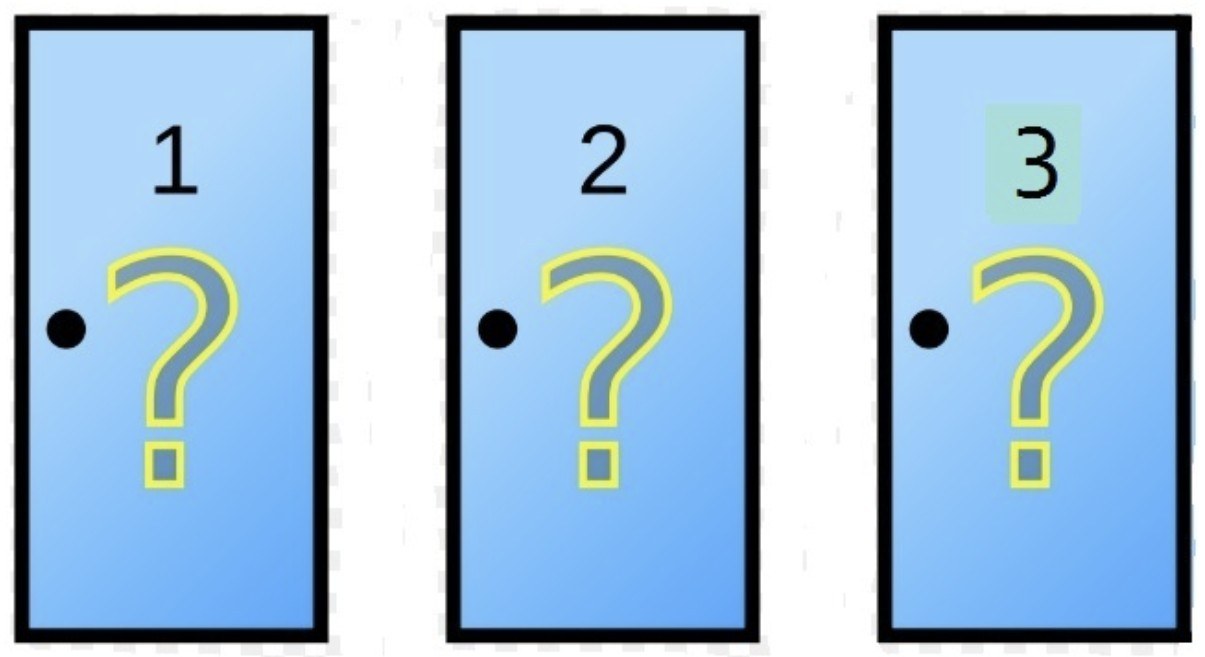by John Allen Paulos
 The well-known counterintuitive Monty Hall problem continues to baffle people if the emails I receive are any indication. A meta-problem is to understand why so many people are unconvinced by the various solutions. Sometimes people even cite the large number of the unconvinced as proof that the solution is a matter of real controversy, just as in politics an inconvenient fact, such as the ubiquity of Covid-19, is obscured by fake controversies.
The well-known counterintuitive Monty Hall problem continues to baffle people if the emails I receive are any indication. A meta-problem is to understand why so many people are unconvinced by the various solutions. Sometimes people even cite the large number of the unconvinced as proof that the solution is a matter of real controversy, just as in politics an inconvenient fact, such as the ubiquity of Covid-19, is obscured by fake controversies.
This analogy is a bit deeper than it may seem. So, first the original problem, which arose because of a television show, “Let’s Make a Deal,” that was popular in the ’60s and ’70s and has been resurrected in one form or another since then. In the show a contestant is presented with three doors, behind one of which, he or she is told, is a new car. The other two doors have nothing behind them.
“The Let’s Make a Deal” host, the eponymous Monty Hall, asks the contestant to pick one of the three doors. Once the contestant has done so, Monty opens one of the two remaining unpicked doors to reveal what, if anything, is behind it, but is careful never to open the door hiding the promised new car. After Monty has opened one of the two unpicked doors, he offers the contestant the chance to switch his or her choice. The question is: Should the contestant stay with the original choice of door and hope the car is behind it or switch to the remaining unopened door?
Many people reason that it doesn’t make any difference since there are now two possibilities, and thus the probability is 1/2 that the car is behind the original door. The correct strategy, however, calls for the contestant to switch. The probability he picked the correct door originally is and remains 1/3, and so the probability the car was placed behind one of the other two unopened doors is 2/3. Since the host is required to open a door behind which there is nothing, the 2/3 probability is now concentrated on the other unopened door. Switching to it will increase the contestant’s chances of winning from 1/3 to 2/3.
So what does this have to do with Covid-19? Consider what mathematicians call a dual problem, which is a somewhat different but essentially identical problem whose solution provides or clarifies the solution of the original.
So let’s assume that the “prize” is not a new car, but an extraordinarily infectious virus that the contestant wants to avoid. He is told that the virus is spring-loaded behind exactly one of the doors and is forced by Taunty Hall, Monty’s sadistic cousin, to pick one of the three doors. Once the contestant has done so, the substitute host Taunty, who has reluctantly agreed never to open the door hiding the virulent virus, opens one of the two unpicked doors to reveal what, if anything, is behind it. After Taunty has opened one of the other two doors, he offers the contestant the chance to switch his or her choice. The question is: Should the contestant stay with the original choice of door and hope nothing is behind it or switch to the remaining unopened door?
The same analysis as that provided for the original problem holds true here, but this time it counsels the contestant to stay with his original choice rather than switch. If he does stay, his probability of being exposed to the virus is and remains 1/3, and so the probability the virus was placed behind one of the other two unopened doors is 2/3. Since the host has agreed to open a door behind which there is nothing, the 2/3 probability is now concentrated on the other unopened door. Switching to it will thus increase the contestant’s chances of choosing the door with the spring-loaded virus from 1/3 to 2/3.
The Covid-19 version is, as noted the dual problem to the original, but I think the correct response to it is more intuitive than the correct response to the original version. It also underscores the wise preference to limit one’s exposure to the virus to as few people as possible, or in the case above to one person rather than to two.
***
John Allen Paulos is a Professor of Mathematics at Temple University and the author of A Mathematician Reads the Newspaper, Innumeracy, and a forthcoming book on mathematical and social puzzles.
